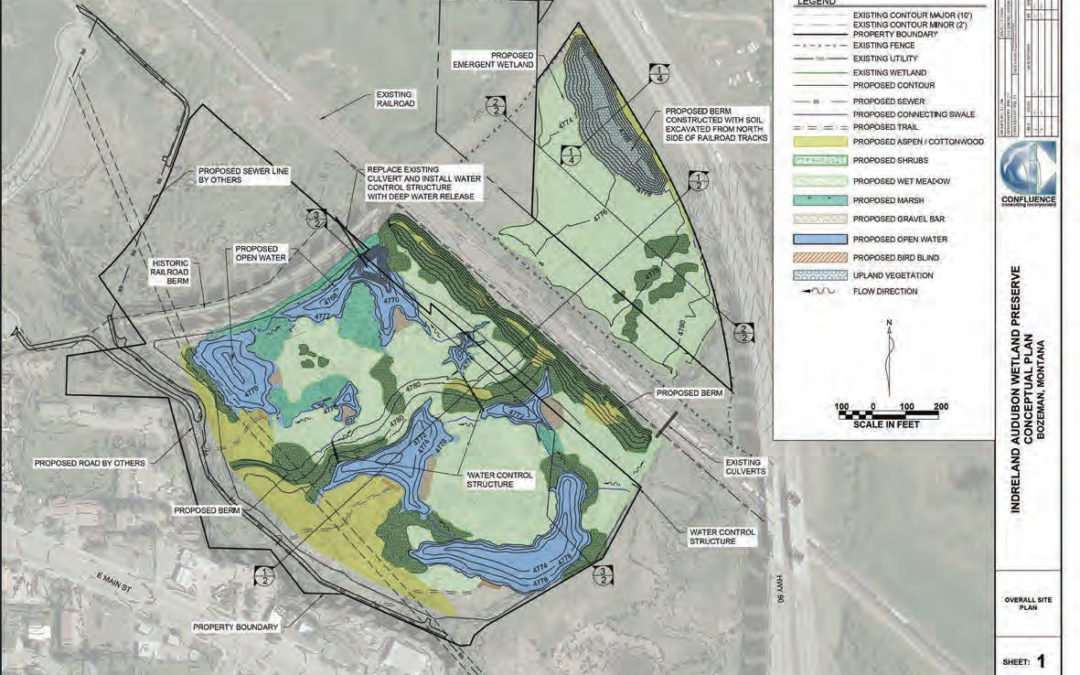Wetland Preserve Conceptual Plan
Prepared by Confluence Consulting Inc. and the Sacajawea Audubon Society Wetland Committee, October 13, 2020
The Sacajawea Audubon Society (SAS) October 12, 2020 Monthly Virtual Meeting featured a presentation of the
conceptual wetland restoration plan for the Indreland Audubon Wetland Preserve (IAWP) located in east Bozeman.
The presentation was made by Rich McEldowney of Confluence Consulting, Inc., the firm that is designing the restoration plan for SAS. Rich is a Vice President of Confluence and is a wetland expert who worked on the Story Mill Park restoration and many other wetland and stream restoration projects throughout the Rocky Mountain region. The map shows the features of the wetland restoration that are currently being evaluated by the SAS Wetland Committee, and we welcome input from SAS members on this preliminary design.
Once the conceptual plan has been finalized it will be presented to the City of Bozeman for their input. After receiving input from the city, the design process will take several months and will include additional opportunities for input from SAS members. The final design will be reviewed by the US Army Corps of Engineers (USACE), whose permit is required before the restoration can be implemented.
Important goals to be achieved in the conceptual plan are to maximize the ecological value of the wetland within the
permitting criteria used by the USACE, and to create a wetland/riparian area that is similar to natural wetlands. In
order to achieve this Confluence surveyed several naturally occurring wetlands to find the appropriate balance between open water, marsh, wet meadow and tree/shrub zones. Confluence has done a preliminary assessment of the wetland
functional value of the IAWP in its current condition compared to the functional value it will attain following
restoration. That evaluation shows that the wetland functional value will increase significantly from the restoration. In developing the IAWP restoration, SAS also has a goal of permitting and operating a wetland mitigation bank. If we are able to accomplish this, it will help prevent future loss of wetlands in Gallatin County and its watersheds.
When reviewing the conceptual plan map, note that the public will be able to view the wetland area from the current
footpath along the former railroad berm, from a sewer line access road currently under construction at the site, and from several proposed bird blinds. SAS will be providing periodic updates on the IAWP design process in future SAS
monthly newsletters, the SAS website (sacajaweaaudubon.org), and future monthly membership meetings.

